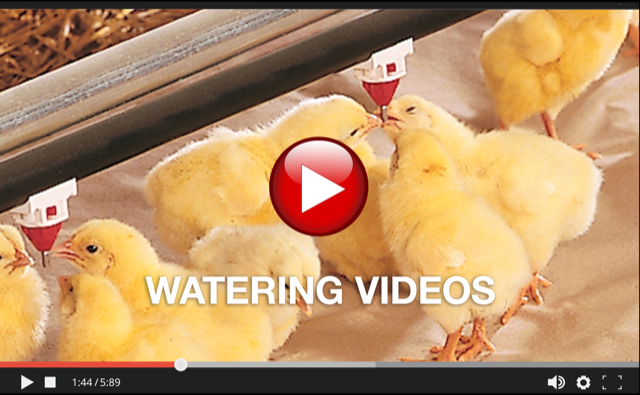To avoid costly internal corrosion damage to drinkers, it is important to know how drinkers can be damaged by the misuse of cleaning agents, and to understand which sanitizers need to be avoided and which are appropriate for cleaning the interior stainless steel parts of a drinker. See our previous article explaining why corrosion is a concern here.
The trigger pin, seat and ball or top pin of each drinker in a poultry watering system are all made of robust stainless steel, designed for longevity and an inert, non-corrosive reaction with water. This is the same kind of high quality steel used in food and beverage manufacturing and processing, such as brewing and dairy, because of its durability, its resistance to corrosion, its non-affect on taste, and its ability to keep the beverage or food free from contamination.
Fresh milk, for example, is an ideal culture medium for microbial flora that can spoil the product. Thus, the manufacture of milk products follows rigorous rules. As it is processed and transported, milk makes contact with the walls of various pieces of equipment. The final product must reach the consumer completely free from all germs. This is why the dairy industry uses stainless steel for such equipment. The smooth surface of stainless steel prevents bacterial contamination and facilitates cleaning and disinfection.
Stainless steel’s non-corrosive properties stem from a passive layer of chromium oxide that prevents the steel it covers from contact with corrosive agents. However, those maintaining stainless steel equipment must be careful about what cleaning and sanitizing agents they use, as some agents can break down the oxide layer which will lead to corrosion. Due to the importance of their stainless steel equipment, members of the dairy and brewing are very selective in choosing the right chemicals for cleaning and sanitizing. But, this is where many poultry producers get into trouble with their drinkers.
In recent years, poultry producers have become increasingly concerned about the threat to their birds from a number of common strains of diseases. To combat this threat, producers often look no further than popular general disinfection agents such as chlorine and bleach to quickly and easily kill and prevent the growth of bacteria and pathogens in the water. Producers may think stainless steel is bullet proof against whatever cleaner they use, but it’s not. Chlorine, bleach and other acid based cleaners have the capacity, when used aggressively, to dissolve the layer of chromium oxide. Once this happens pitting and rust can occur on the ball and seat, compromising the seal and creating leaks.
So, by using oxide-damaging chemicals that cause drinkers to corrode and leak, the litter gets much wetter, which promotes pathogen growth and increased ammonia release. The house environment becomes less hospitable for raising healthy, robust birds, and producers end up bringing about the very problem they were trying to avoid.
Next we’ll talk about how to detect drinker corrosion and how to prevent it.












